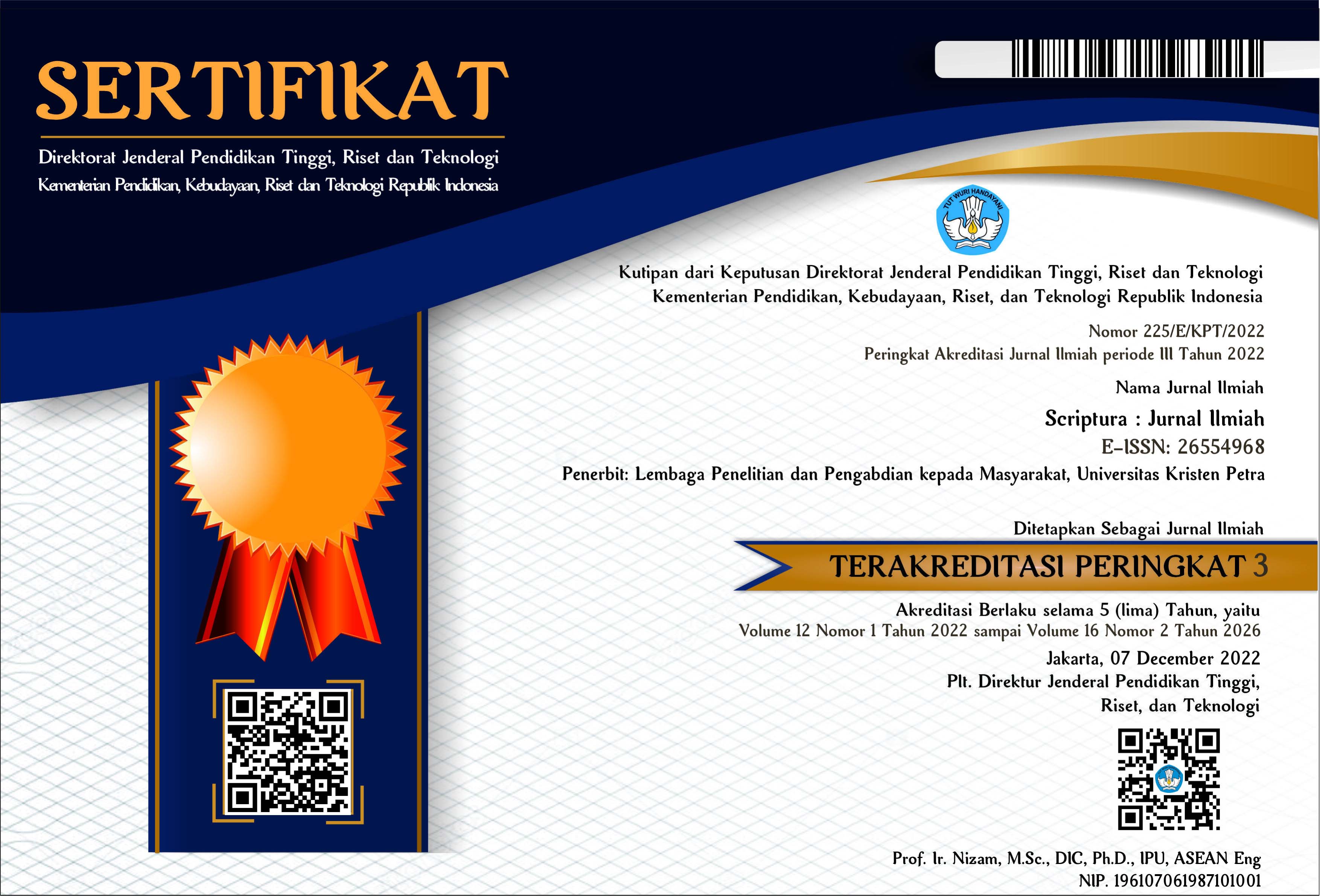BUDAYA INTERNET: PERKEMBANGAN TEKNOLOGI INFORMASI DAN KOMUNIKASI DALAM MENDUKUNG PENGGUNAAN MEDIA DI MASYARAKAT
 :
:
https://doi.org/10.9744/scriptura.5.1.23-30
Keywords:
Internet, social interaction, media literacy, cyber world, internet culture.Abstract
The emergence of The Internet as a new communication medium has been associated with conflicting claims about the rise of new pattern of social interaction. The idea of virtual communities advanced by the pioneers of social interaction on the Internet. High Internet usage can eventually lead to new social problems, the example problem is excessive use of electronic communication to personal that is reducing the forms of interaction between personal communication, even very unusual we find out personal information to someone published in general use social media status even tough that is very personal problems. Conclusion from the research are: First, the use of Internet-based media in excess will cause a lot of problems ranging from addiction, behavioral changes to crimes cyber world. Second, the Internet culture developed at this time because there is a synergy created from four cultures in it, namely, Technocratic, Hacker, Virtual Communitarians, and Entrepreneurial. Third, Media Education or training in using the media becomes very important to foster media literacy.References
Carlsson Ulla, et all. (2008). Empowerment Through Media Education: An Intercultural Dialogue. Nordicom. Goteborg University, Sweden.
Castells, Manuel. (2001). The Internet Galaxy: Reflection on the Internet. Business and Society. Oxford University Press, New York.
Fidler, Roger. (1997). Mediamorfosis: Understanding New Media. Pine Forge Press. Thousand Oaks.
Haryati. (2011). Studi Literasi Informasi Pada Pega¬wai Negeri Sipil (PNS) Tenaga Pendidik. Jurnal Penelitian Komunikasi. Bandung: BPPKI. Vol. 14, No. 2. hal. 111-126.
Himanen, Pekka. (2001). The Hacker Ethic and the Spirit of the Information Age. New York: Ran-dom House.
http://www.isoc.org (the site of the Internet Society)
International Symposium on Media Education at Grunwald, Federal Republic of Germany (http://www.unesco.org/education/nfsunesco/pdf/MEDIA_S.PDF)
Kappas Arvid and Krammer Nicole C. (2011). Face to Face Communication over the Internet. Cambridge University Press, London.
Literasi Internet pada Siswa Sekolah Menengah Pertama oleh Noneng Sumiaty dan Neti Sumiaty. Jurnal Penelitian Komunikasi. Vol. 17. No. 1 2014 (http://jurnal.kominfo.go.id, diakes terakhir 16 Juli 2015)
Mudjiyanto, Bambang. (2012). Literasi Internet Dan Partisipasi Politik Masyarakat Pemilih dalam Aktivitas Pemanfaatan Media Baru. Jurnal Studi Komunikasi Dan Media. Jakarta: BPPKI. Vol. 16 No. 1. hal. 1-15.
Rahman, A. Harahap. (2010). Literasi Internet Dan Peningkatan Ilmu Pengetahuan. Jurnal Pikom Penelitian komunikasi dan Pembangunan. Medan Balai besar Pengkajian Dan Pengem-bangan Komunikasi dan Informatika. Vol. 11 No. 3. hal. 403 - 426.
Rogers Everett M. (2003). Diffusion of Innovation, Macmillan Publishing, New York.
Downloads
Published
How to Cite
Issue
Section
License
Authors who publish in the SCRIPTURA Jurnal Ilmiah agree to the following terms:
Authors retain unrestricted copyright and full publishing rights. The authors grant the Publisher the right of first publication, with the work simultaneously licensed under the terms and conditions of the Creative Commons Attribution License (CC BY) that allows for unlimited use, distribution, and content reproduction on all media as long as the original author and source are properly acknowledged and cited.

















